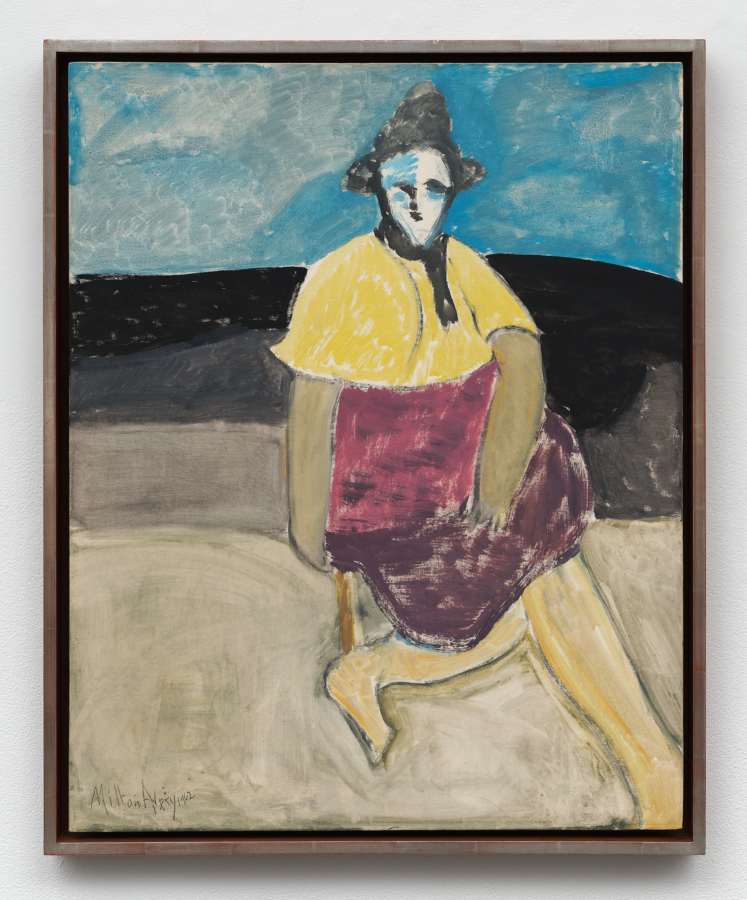April 19, 1970
Download as PDF
View on Artforum
Robert Duran’s transformation to loose, lyrical color paintings began to occur around the time of Duran’s last show (see Artforum, Dec. 1968, p. 58) when he got interested in spraying the separate flat slabs and square posts of his compactly organized sculptures with very pictorial cloudy films of color. What was most vital about this work for me was not the positive forms of the solid units, but, instead, the more freely circulating labyrinthine channels created between and around them. Geometric mystical diagrams familiar to the art of India, China, or folk cultures throughout the world often illustrate these qualities of dynamically energized space. Likewise, the use of surface color and the floor plan arrangements that Duran utilized sought to catalyze certain negative energies around the three-dimensional integers. They trace his efforts to quicken what had become, by then, a fairly closed way of thinking, based on geometric grids as organizing factors, or on methods of construction premised on precision and angularity. The restlessness which the artist felt vis-à-vis these habitual and carefully evolved approaches to his sculpture is seen in some earlier unexhibited pictures which were a direct jump from the three-dimensional work to the dimensions of painting.
In these bare, unpainted fields invisible grids were filled out by soft puffs of pastel stains. Gradually Duran broke away from this reticent, still somewhat restricting pattern; the look of the current work is a result of the freedom he subsequently allowed himself both with fluid color and with a more random distribution of many small jigsaw puzzle forms. It is worth remarking here, too, that Duran’s awareness of and involvement with the changes which the work of the sculptor Richard Van Buren had gone through during the past year has also had some parallel bearing on his own painting. As Van Buren has been able to deal with the materiality and nonlinear aspects of his sculpture in terms of freely poured vehicles for color/light and density, Duran too has shifted his frame of reference to corresponding pictorial terms of color, light, and translucency conveyed by spontaneous forms. Slow or interrupted time had become one of the basic issues with which both artists found themselves dissatisfied in their previous work. Finding the way through one of Duran’s more complex layouts of slabs and posts could get somewhat cumbersome—just as Van Buren had noticed that conflicts between the tinted polyester resin coatings and the wood substructures resulted in a problematic viewing of his work.
Duran’s new paintings are single or coupled rectangular panels whose richly soaked fields of fruity oranges, brownish blue-greens and purples mixed with yellows are punctuated by staccato fragments. These roughly key-like or jigsaw shapes seem to shine through the ground colors with an effect which reminded me of the glow which is obtained from India ink scratch boards underlaid with crayoned rainbow hues. The drifting fluidity of both the fields and the smaller, casually drawn units they contain are not wholly as lyrical or spatial as the description might suggest. The space is kept at a shallow level—while the painted areas jostle and flow toward the borders of the fields. They are then deliberately arrested by a white border which separates them by one-half inch from the actual edges of the canvas. It is as if the heady liberation which paint and sensuous chromatics have afforded the artist must still undergo the controls of the sculptor’s customary constructive disciplines. But it is still good to see that the impasse which Duran had formerly felt in his sculpture has found such a joyous outlet, one which is allowing him to push at the boundaries of his own sensibility and talents.
Next to Duran’s carnival colors, Brice Marden’s sets of drawings and his two dryly scrubbed paintings looked chaste indeed. The built-up, then scraped-out surfaces of these canvases with their neutral uniform coloring and infinitesimally varied strokes show Marden to be working within the limited areas he has established and maintained for himself during the past few years. The white drippy strip at the bottom of these pictures has now virtually disappeared, thus obscuring or minimalizing even the briefest overt record of the process by which the picture surface has been covered. The drawings are involved with similar minute overall variations of texture, opacity, and sheen, also based on a uniformity of value. A number of them are grid-ruled sheets smudged with many layers of heavy black graphite, which shines and reflects as well as absorbs exterior lighting. Another drawing contains two white square panels covered with smooth white pencil marks which differentiate them from the rougher weave of the paper only after extended viewing.
—Emily Wasserman



